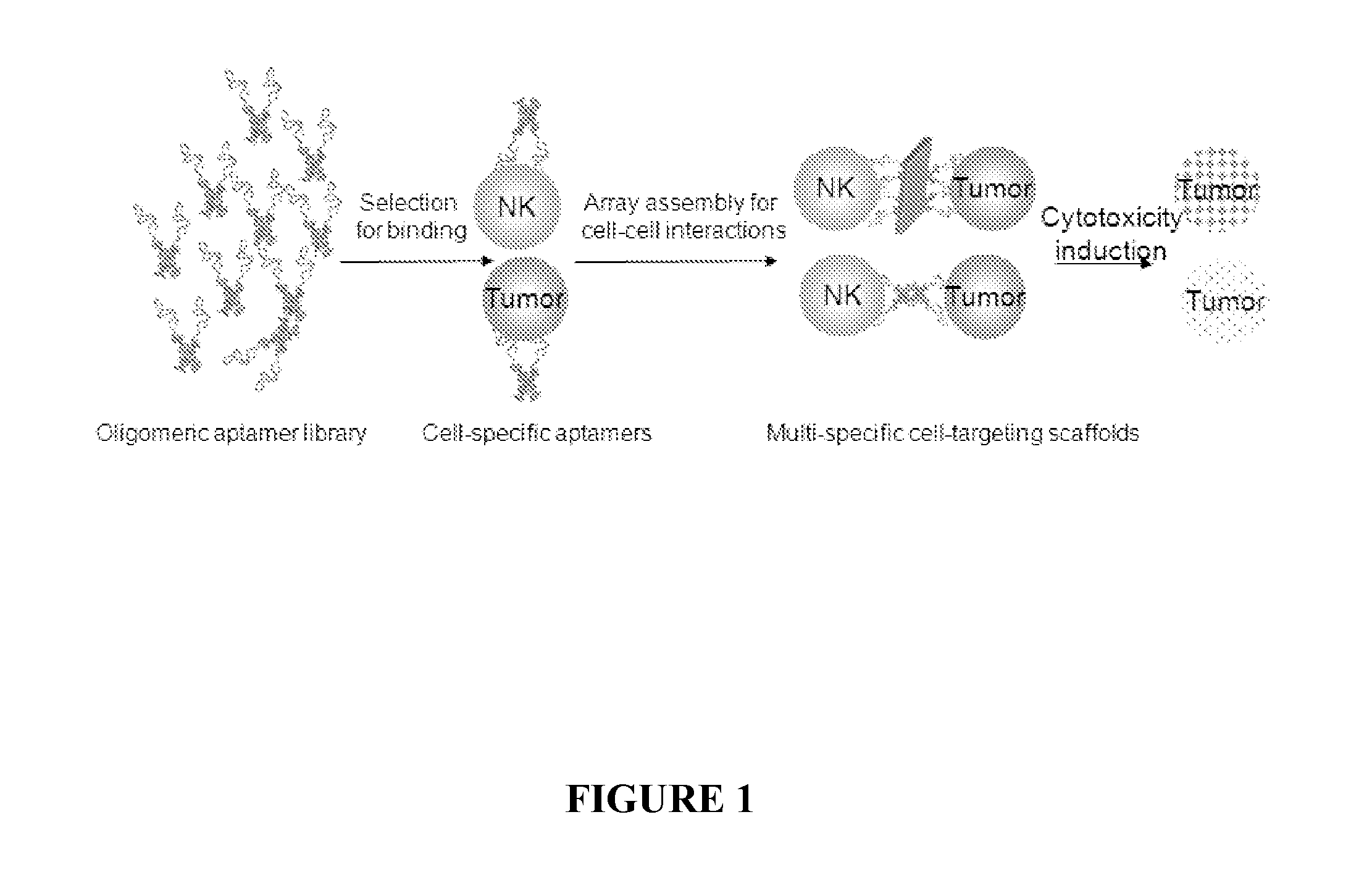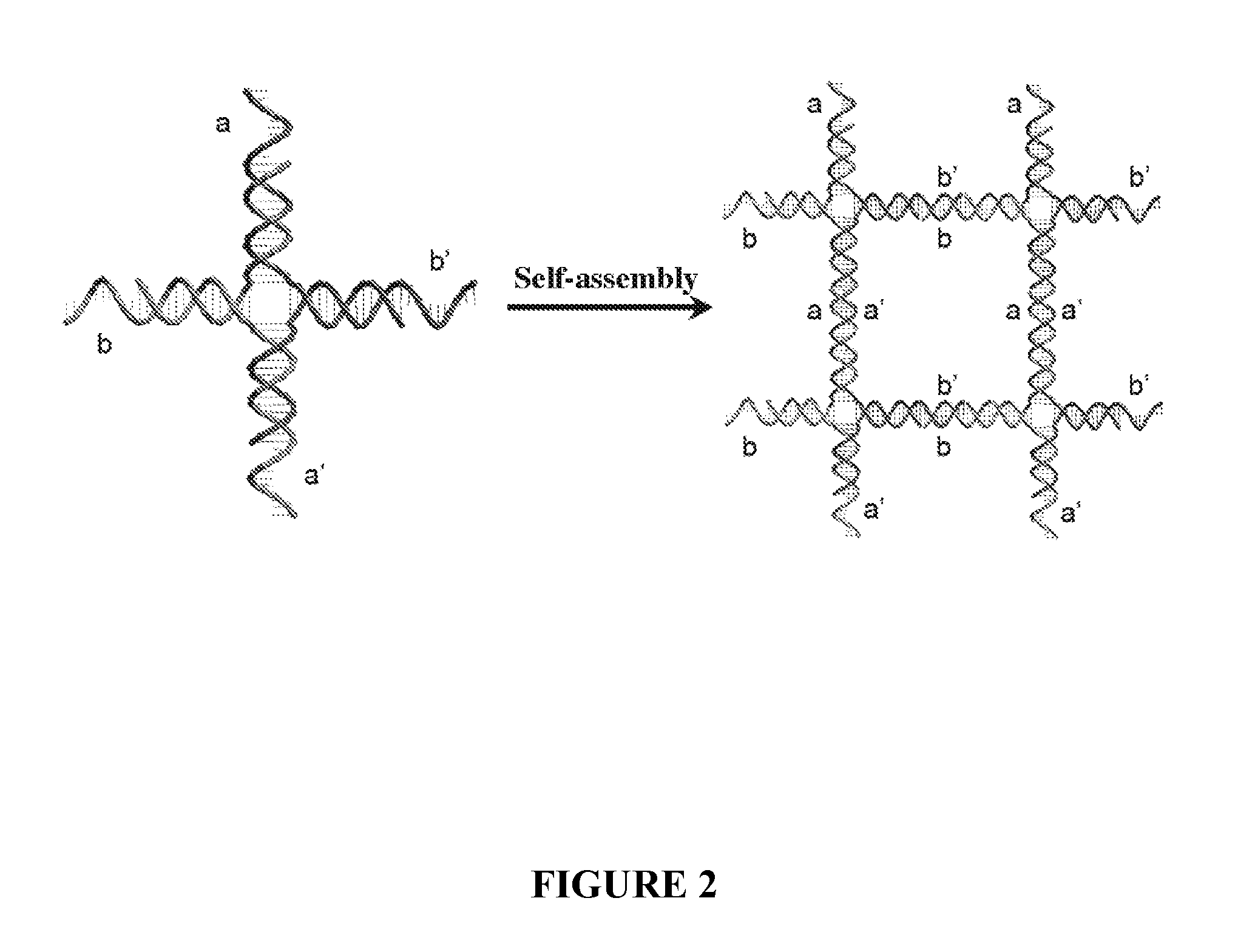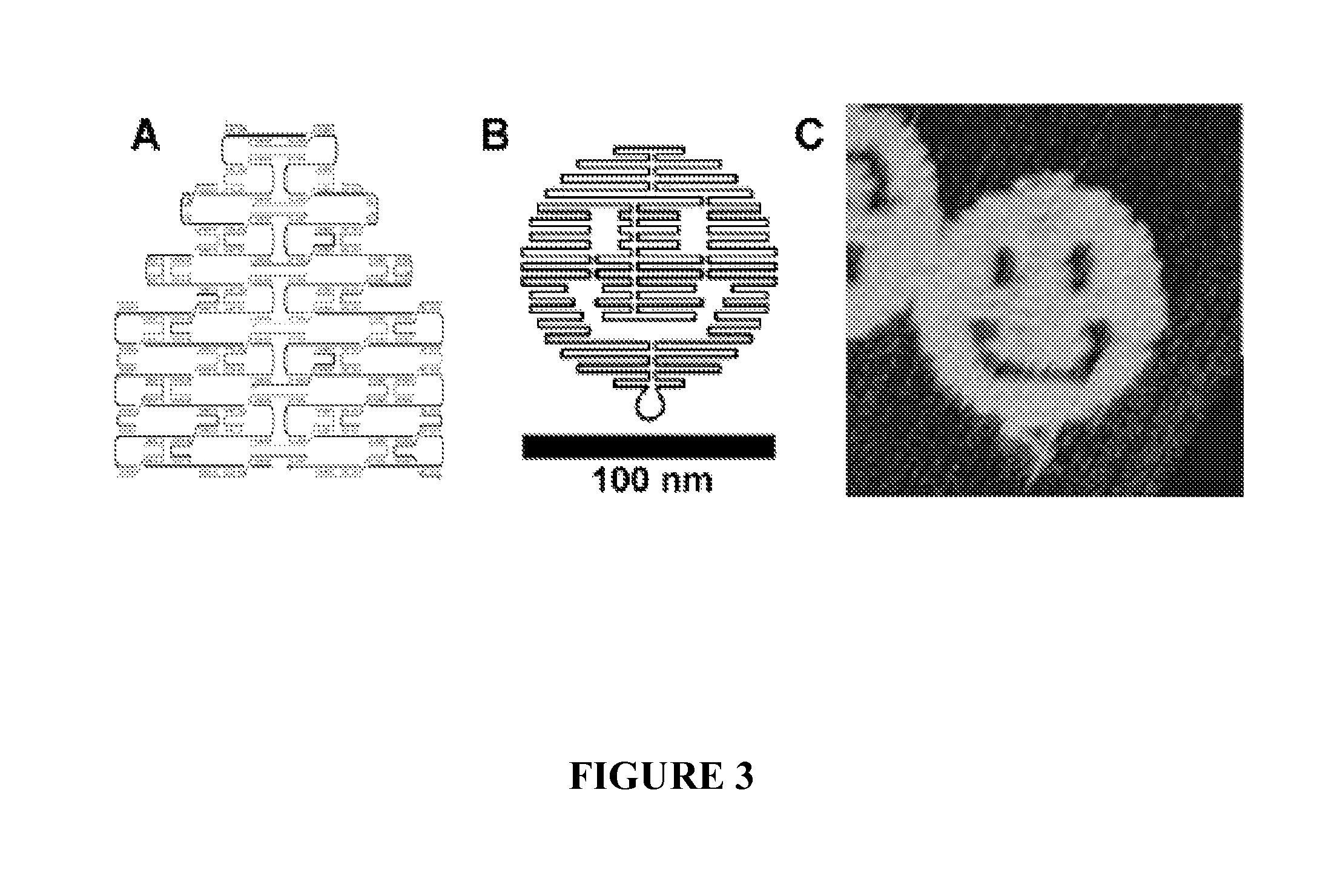DNA nanostructures that promote cell-cell interaction and use thereof
a nano-structure and cell technology, applied in the field of cell biology, tumor immunology, nucleic acidbased tiling arrays, nanotechnology, can solve the problems of cd4 null mice not being able to mount an effective immune response, time-consuming and expensive screening processes for identification of small molecules with anti-cancer activities, and inability to detect tumors
- Summary
- Abstract
- Description
- Claims
- Application Information
AI Technical Summary
Benefits of technology
Problems solved by technology
Method used
Image
Examples
example 1
Nanostructure Directed Assembly of Multivalent Aptamers for Enhanced Binding Affinity
[0135]Multivalent interaction plays a large role in biology as many bio-machineries display high affinity multivalent bindings to their targets when sub-domains are arranged accurately with certain spatial and geometric configurations. It was demonstrated that distance dependent multivalent binding effects can be systematically investigated by incorporating multiple aptamers into self-assembled DNA nanostructures with precise control of nano-meter spatial distances. Such multivalent binding events were visualized at the single molecule level with atomic force microscopy (FIG. 5).
[0136]The results illustrate a unique application of structural DNA nanotechnology for exploring multi-component biomolecular interactions and set forth a path for constructing spatial combinatorics at the nanometer scale. This nano-engineering platform offers an unprecedented opportunity to create programmable multivalent b...
example 2
Multivalent-ss-DNA Aptamers for Targeting Cell Surface Molecules
[0137]Multimeric aptamer was constructed using a known ssDNA-aptamer (TAGGCAGTGGTTTGACGTCCGCATGTTGGGAATAGCCACGCCT, SEQ ID NO:3) as described by Tang et al. 2007, Anal. Chem. 79: 4900-4907. Dimeric and tetrameric aptamers containing such monomeric aptamer binding unit were constructed by linking monomeric aptamer with linker sequences as shown in FIG. 11A. The binding of fluorescence-labeled monomeric aptamer to a target cell was analyzed by flow cytometry. Binding competition assays were performed to assess the binding activities of various aptamer structures, i.e., monomers, dimers, trimers and tetramers to the target cells. Flow cytometry analysis was carried out measuring cell staining with the fluorescence-labeled monomeric aptamer in the presence of unlabeled dimers, trimers, or tetramers. As shown in FIG. 6A, the dimeric aptamer competed with labeled monomeric aptamer for binding to the target cells. Among various...
example 3
Generation of DNA-Nanostructures with Aptamer as Novel Recognition Molecules that Engage Effector Immune Cells to Attack Tumor Cells
[0145]In this series of experiments, tunable DNA nanostructures are used to create multivalent and multispecific nanostructure to promote cell-cell interactions to induce ligand-directed lymphocyte activation and tumor killing. A multimeric aptamer library is created in which multiple units of aptamers are linked together by different DNA-nanostructure. This library is screened against a well-characterized effector NK cell line (NK91MI) and tumor cell line (Ramos) to select aptamer configurations with a high binding activity to effector or tumor cells. To produce multivalent aptamer-nucleic acid nanostructures that can engage inter-cellular interactions between NK and Ramos, the identified cellular binding aptamer motif is assembled onto a programmable DNA-nanostructure platform, which is then selected on their activity to facilitate cell-cell interacti...
PUM
| Property | Measurement | Unit |
|---|---|---|
| distance | aaaaa | aaaaa |
| distance | aaaaa | aaaaa |
| length | aaaaa | aaaaa |
Abstract
Description
Claims
Application Information
 Login to View More
Login to View More - R&D
- Intellectual Property
- Life Sciences
- Materials
- Tech Scout
- Unparalleled Data Quality
- Higher Quality Content
- 60% Fewer Hallucinations
Browse by: Latest US Patents, China's latest patents, Technical Efficacy Thesaurus, Application Domain, Technology Topic, Popular Technical Reports.
© 2025 PatSnap. All rights reserved.Legal|Privacy policy|Modern Slavery Act Transparency Statement|Sitemap|About US| Contact US: help@patsnap.com



